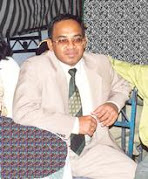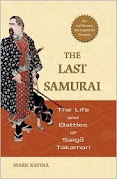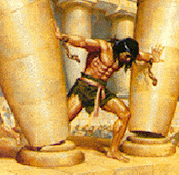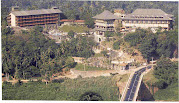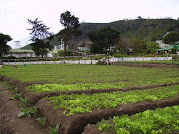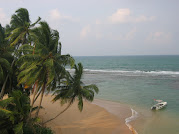


 Ruwanweli dagoba (Mahathupa) (Great Thupa), Anuradhapura, Sri Lanka
Ruwanweli dagoba (Mahathupa) (Great Thupa), Anuradhapura, Sri Lanka
(Part 1)
Compilation by bunpeiris
Stupa (a Sanskrit word) has its own country names:
Chorten (the basis of offering) in Tibet and Bhutan;
Chaitya in Nepal;
Candi in Indonesia;
Chedi (a Pali synonym) in Thailand;
Chedey in Cambodia;
Tap in Korea;
That in Laos;
Ta (meanining tower) in China;
Pagoda in Japan.
1 Concept of Stupa (Dagoba): symbol of Enlightened mind
“It is through the language of archetypal symbols that we reconnect ourselves with the primordial ground from which all human culture has sprung... Among the oldest of architectural forms, the Stupa is a universal symbol of enlightened mind, a familiar sight in all countries where Buddhism has flourished. In the Stupa we find the ancient reliquary monuments once built for kings and heroes transformed into profound expressions of knowledge. Rightly interpreted and understood by both reason and intuition, it mirrors the harmony and perfection of universal principles and invites the human mind to awaken its full capabilities...” Lama Angarika Govinda (1898- 1985) (a)
2 The monumental size of the dagoba
“….two largest dagobas at Anuradhapura surpass in content, & three dagobas exceeded in height, all but the two enormous pyramids of Khufu & Khafra at Gizeh”
Ancient Ceylon: H. Parker (Colonial British civil servant in Ceylon attached to Irrigation Dept of Ceylon during 1873-1904)
First published in 1909 Reprint ISBN 81-206-0208-0
3 The largest stupas in Sri Lanka
In size a monumental 338 feet high, the Mahathupa covers over an acre & half with a diameter of the circle at the base being 294 feet. It is said that the great stupa at Sanchi, in India, will be dwarfed by the side of the Mahathupa. It was not however, the tallest in Anuradhapura for very long, having this position for 250 years or so. The stupa of the Abhaygirii monastery was built during the reign of King Gajabahu (114-136AD) & towers at 370 feet. The Abhayagiri monastery was founded by King Vattagamini in 88 BC. The Abyagiri stupa too,was overtaken later during King Mahasen stupa which was originally built to 400ft height & at the time surpassed only by two of the larger pyramids of Egypt, making it the 3rd largest building in the world at the time. The Jetawana stupa now takes credit for being the largest of the stupas lies to the East of the Ruwan weli seya. Archt. Shereen Amendra: Beyoond the Seeing Eye; The Mahathupa of Lanka ISBN 978-955-50098-0-5 (b)
4 The Bulldozer & Bulldog of Lanka, the Elephant leads
With the materials thus obtained, the king (A) commenced the work on the Great Thupa as the Vaiskha constellation (B) appeared on the full-moon day of the month of May. Moving Devanampiatissa’s pillar to the sidelines of the site, the Ruler of the Earth used the former position as the center point of the radius of the majestic new thupa
Mahawmsa, the great chronicle of Sri Lanka - Modern text by Douglas Bullis ISBN 955- 1266-09-9
The lord of the land had the place for the thupa dug out to a depth of even cubits to make it firm in every way. Round stones (C) that he commanded his soldiers to bring hither did he cause to be broken with hammers, & then did he, having knowledge of the right & wrong ways, command that the crushed stone, to make the ground firmer, be stamped down by great elephants whose feet were bound with leather
Mahawamsa, the Great Chronicle of Sri Lanka 1912 translation by Dr. Wilhelm Geiger
5 That’s a hyper reinforced-concrete foundation in 161-137 BC
The clay at the place where the celestial river descends from its source in the heavens, through the air, across the earth into the underworld, being forever washed is exceedingly fine for thirty yojanas all around. On account of its fineness, it is called “butter clay”. Arahant samaneras (D) brought the clay from there. The workers spread the clay over the layers of stone. The king ordered bricks then laid over the clay, rough plaster over the bricks, quartz over the plaster, a network of iron over the clay, & above that, fragrant marimba brought by samaneras from Himalayas
Mahaawmsa , the great chronicle of Sri Lanka - Modern text by Douglas Bullis ISBN 955- 1266-09-9
The lord of the earth had crystal spread over that and, over the crystal, stones. Everywhere in work was the clay called “butter-clay’. With the resin of the wood-apple, mixed in mercury, a bronze plate, eight finger-breadths, was laid over the stones. The lord of the chariots had a silver plate, seven finger-breadths thick, laid over it with arsenic mixed in oil of sesamum
Mahawamsa, The great Chronicle of Sri Lanka New Translation (1989) Revision (2005) by Dr. Ananda W. P.Guruge ISBN 955-20-8963-8
6. Making of the relic-chamber
Thereupon commanding that the drums be beaten he called the master-builders together with all speed; in number they were five hundred. And one of them answered the king, on his asking; “How wilt thou make (the thupa)?” “Taking a hundred workmen I will use one wagon-load of sand in one-day.”
The king rejected him. Thereon they offered (to work with) one half less & yet one half less again (at last with) two ammanas of sand. These four master-builders also did the king reject. Then an experienced & shrewd master-builders said to the king:I shall pound (the sand) in a mortar, & then, when it is shifted, have it crushed in the mill (thus will use) one ammanna (E) (only) of sand. And on these words the lord of the land, whose courage was like to Indra’s consented, with the thought; ’There will be no grass nor any such thing on our cetiya. (F)
Mahawamsa, the Great Chronicle of Sri Lanka 1912 translation by Dr. Wilhelm Geiger
7. The aesthetic design
And he questioned him saying:’ “in what form wilt thou make the cetiya?” At that moment Vissakamma entered into (& possessed) him. When the master-builder had had a golden bowl filled with water, he took water in his hand & let it fall on the surface of the wateer. A great bubble had had a golden bowl filled with water, he took water in his hand & let it fall unto a half-globe of crystal. He said: ‘Thus will I make it.’ And well-pleased the king bestowed on him a pair of garments worth a thousand pieces of money) & ornamented shoes & twelve thousands kahapanas. (G)
Mahawamsa, the Great Chronicle of Sri Lanka 1912 translation by Dr. Wilhelm Geiger
8. Determination of the circumference
Uplifted by the power of pure happiness, the king, intent on the welfare of beings &, determined to trace a great circle for the cetiya, had a minister of noble birth-well attired in ceremonial dress-to hold the pure silver tracing stick fixed to a post of gold & began to trace a circle on the prepared site. A great thera of immense miraculous power, by the name of Siddhantha, being far-sighted, prevented the king from doing it. Seeing to the future &, thinking, ‘If the king were to start a thupa of this size, his death will come even while the thupa is not finished & a gigantic thupa will be difficult to repair,” he restricted the magnitude.
In agreement with the Sangha & from reverence to the thera’s statement & with his advice, had a medium-sized circle drawn for the cetiya so as to lay the bricks.
With unfailing energy, he had eight vases of gold & silver in the center &, around them, a thousand & eight vases & lots of one hundred & eight garments. He also had eight excellent brick placed separately. (H)
Mahawamsa, The great Chronicle of Sri Lanka New Translation (1989) Revision (2005) by Dr. Ananda W. P.Guruge ISBN 955-20-8963-8
Footnotes
(A) Hero of the nation, King Dutugamunu 161-137 BC, Sri Lanka
(B) Taurus
(C) Stones from creeks & rivers. Such stones have no more hidden fissures that will later break under natural pressure. When struck with hammers they shatter instead of cleave.
Foot note from Douglas Bullis
(D)The combination of “Arahant’ with ‘samanera” is not the contradiction in terms it appears to be. A samanera is simply one who has not taken upsampada or higher ordination. An Arhant is one who has eliminated ignorance of the Dhamma & the defilements of the mind, & by the assiduous practice of meditation & wisdom achieves enlightenment & purity of mind under the tutelage of instructors. One need not take higher orders to do this.
Foot note from Douglas Bullis’s modern text of Mahawamsa
(E) Ammanna is a measure of capacity equivalent to 11x 64 handfuls
(F)The use of too much sand would tell against the durability of the thupa. Therefore the Tika makes the king say to the mastebuilder:’Shouldst thou do so the cetiya would be like a heap of pure sand would be covered with grass & bushes.’ Geiger
Tika is the book of commentaries on the great Chronicle of Sri Lanka
On a visit to Mulgirigala in 1826, colonial civil servant George Turnour found in this library Sri Lanka's Rosetta stone, ola leaf (palm leaf manuscripts) containing the key to translate the Mahawamsa (the Great Chronilcle); Tika (commentary) made it possible for the Mahawamsa to be translated into Sinhala. The translation enabled scholars to study the glorious unbroken history of the island of Lanka since 543 BC to comparatively modern times & correlate with the numerous & varied evidence in the form of inscriptions, great living monuments such as rainwater reservoirs, stupas & temples & archeological ruins.
(G) It is refreshing to read of a king who gave such desirable marks of his appreciation on the architect’s intelligence; he resembled in this respect day even the slippers are not given to successful architects in Ceylon
Ancient Ceylon: H. Parker (Colonial British civil servant in Ceylon attached to Irrigation Dept of Ceylon during 1873-1904)
First published in 1909 Reprint 81-206-0208-0
During the period indicated herein by H. Parker, traditional architect master builders of temples & stupas, being villagers didn’t have a pair of slippers on them. Nobody bothered to gift them a pair either. Remark made by bunpeiris.
(H) Mantras are chanted 108 or 1008 or 10008 or 100008 times. Furthermore there is an interesting observation by Archt. Shereen Amendra (b) Quote It is curious that the new vases numbering to 1008, with the eight gold & silver vases add up to 1024. In computer jargon 1024 bytes add upto 1 kiobyte, or 1 K. Was there a possibility for data storage built into Mahatupa, possibly of 1K capacity Unquote
(a) This quotation from Lama Govinda gives us a taste of why Stupas were built and what they signify now and in former times. They are the most fascinating structures on the planet. Their development mirrors that of our cultures, and their transformation stands as a witness to the changes in our philosophical concepts
Lama Anagarika Govinda was born Ernst Lothar Hoffman in Waldheim, Germany (old kingdom of Saxony) in 1898, the son of a German father and a Bolivian mother. Folowing a stint of two years in the German army during World War I he was invalided owing to tuberculosis & discharged from the army. During 1920-1928, most possibly for health reasons, he lived on the island of Capri, an art colonay in Italy and became increasingly interested in Buddhism, including the practice of meditation. In 1928 he took spiritual shelter in Ceylon (Sri Lanka) by becoming a Buddhist monk of the Theravada tradition. Under the guidance of the German monk Nyanatiloka Thera of Ceylon, Govinda took vows and found time in his monastic schedule to master ancient Indian language of Pali, to make a close study of the Abhidharma. In1931 he embraced teachings of Tibetan Buddhism and having founded his order in 1933 he lived for three decades in Almora in northern India. Owing to his German origin, Govinda was interned by the British army during World War II. In 1947 he married a Persian speaking photographer Li Gotami and travelled to Tibet. In the 1960s he began travelling around the world to lecture on Buddhism, and settled in the San Francisco Bay area in his twilight years, where he was hosted for a time by Alan Watts.
(b) Beyond the Seeing Eye: The Mahathupa of Lanka by Archt.Shereen Amendra ISBN 978-955-50098-0-5
Quote Forward Shereen Amendra, through the comprehensive documentation of her multi disciplinary investigation in a hitherto unchanrted subject, has provided us with fascinating thesis surrounding the Ruvanveli Seya, one of the great monuments of Sri Lanka. Unquote. Quote book cover. This book brings to light a new interpretation on an ancient record, which has lain hidden because the world neither understood or realized that such mind boggling technology known to present generations only recently. Unquote









